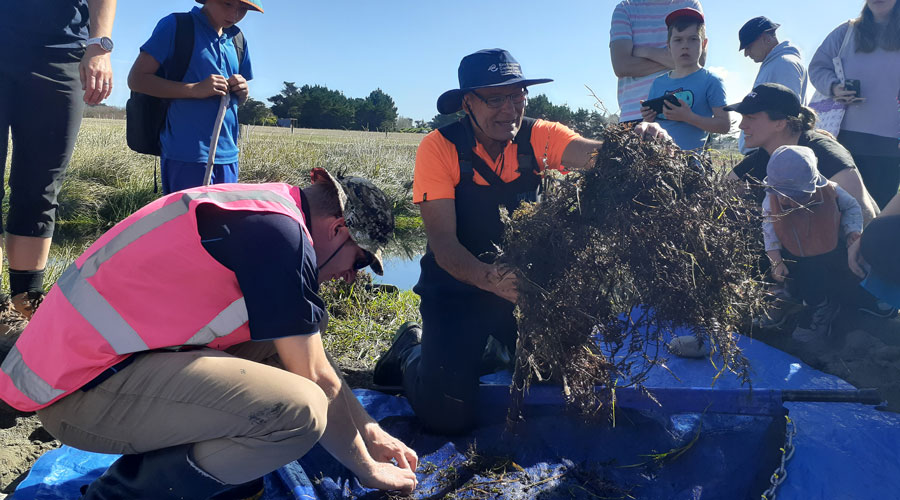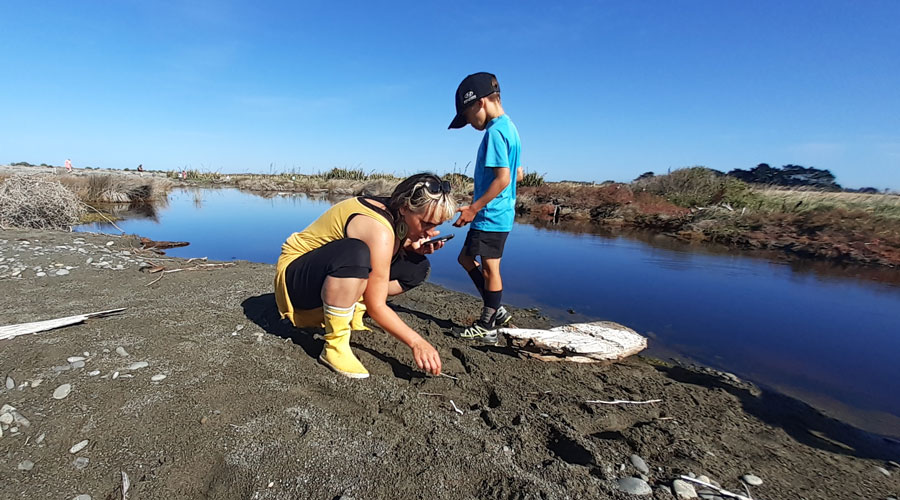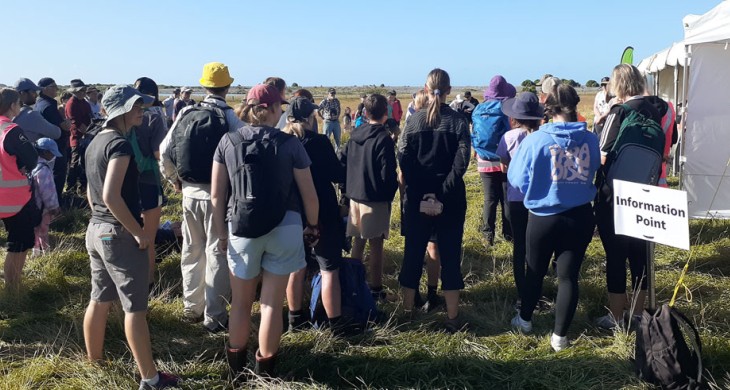05 April 2023
An abundance of flora and fauna treasures were found at a recent Bioblitz, helping to create a snapshot of the area’s biodiversity.
Held at Muriwai o Whata/Coopers Lagoon, the event enjoyed a strong turnout, with well over 100 members of the public attending.
Bioblitz was a joint effort between Environment Canterbury, Te Rūnanga o Ngāi Tahu and Te Taumutu Rūnanga. It was a chance for the community to learn about, and connect with, this special place of cultural significance.
The aim was to find and identify as many species as possible throughout the day. People used the iNaturalist app to upload photos and audio of their discoveries, creating an inventory of birds, plants, insects, lichen, fish, invertebrates and more.
Citizen scientists get to work
The day began with a karakia and welcoming speech. Tania Nutira from Te Taumutu Rūnanga explained the significance of Muriwai o Whata. She recalled stories about her great-great grandmother catching tuna/eels and tying them onto her waistband, taking them back to Taumutu.
Tania also spoke of her father harvesting pūhā in the area when she was a child – so for her people, it’s a place of nourishment.
For the whānau of Ruahikihiki ki Taumutu, Muriwai o Whata is also the spiritual home of tuna/eels.
After speech formalities and some housekeeping, the first groups of participants were sent off on expeditions in 'zones' of varying terrain (ranging from a family-friendly area to rough, boggy land) to see what they could find.
They were led by the relevant experts, who shared their knowledge of the various species and answered any questions.
Participants later returned to basecamp and examined their discoveries through microscopes while enjoying a BBQ lunch. New groups ventured off in the afternoon for 'Round Two' of the day.
Lincoln University ecology lecturer, Dr Jon Sullivan, was among those who took part, and says the exercise will be "very helpful."
"The Bioblitz will help build up a baseline for what’s actually here, and next time we come we can see what’s changed.
"It will help us understand what needs protecting and will add to the knowledge of this special environment."
Important discoveries at the Bioblitz
So far, more than 1,100 observations (images and photos) have been uploaded to the app, identifying more than 250 species. 200 of these species had never been recorded on iNaturalist NZ at the site before.
The day’s discoveries included:
- Three plant species with a conservation status of At Risk; New Zealand swamp nettle (Urtica perconfusa), Oxybasis ambigua, and New Zealand musk (Thyridia repens)
- Royal spoonbill/kōtuku ngutupapa (At Risk – Naturally Uncommon)
- Two threatened bird species; spotted shag/kawau tikitiki (Nationally Vulnerable) and black-fronted tern/tarapirohe (Nationally Endangered)
- A pseudoscorpion (a scorpion-like arachnid)

Whakaweku, also known as koere or taruke (pictured), is a traditional mātauranga Māori trapping method for capturing kēkēwai (freshwater crayfish). It’s been embraced by scientists as a mātauranga monitoring tool.
An impressive response
Zone delivery lead, Gillian Jenkins, says she was very impressed by the interest from whānau of Te Taumutu Rūnanga, the local community – and the children who attended.
"They enthusiastically hunted and discovered bugs, plants, birds and wetland creatures, helping us collect information about what can be found in the area.
"Many people told us it was their first Bioblitz, and they’re now keen to take part in any future events. It was a great day out for all."

The family friendly ‘zone’ was popular with youngsters.

